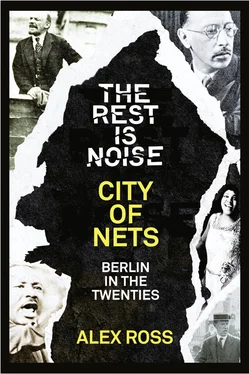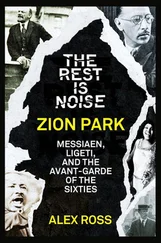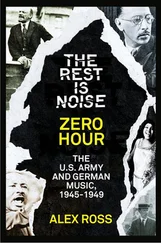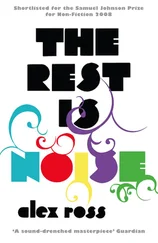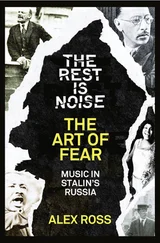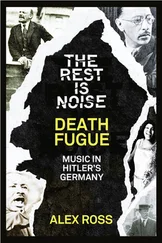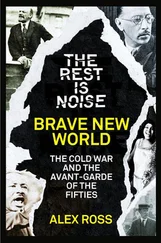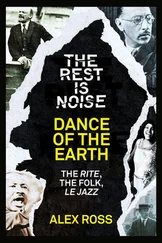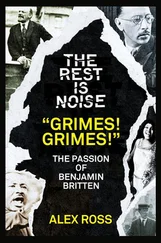Inconvenient realities soon intruded on Kestenberg’s arts utopia. As the critic John Rockwell has shown in his study of Weimar musical politics, Kestenberg never really figured out who the People were or what they wanted to hear: the working classes whom the Kroll Opera hoped to serve were often confounded by the company’s revisionist take on the classics. At the same time, Kestenberg lacked the political skill to placate the right wing, which deplored all avant-garde doings. While Weimar’s bohemians and leftists had their time in the sun, the reactionary, xenophobic strain in German culture was never far below the surface. One night in 1928, Joseph Goebbels walked around the Tauentzienstrasse cabaret district and returned home to write: “This is not the true Berlin … The other Berlin is lurking, ready to pounce.”
Music for Use
During the Great War, Paul Hindemith banged the bass drum in a military band, racing back and forth a mile or so behind the front lines, playing marches and dances for soldiers who were recovering from their spell in the trenches. He also performed in an all-soldier string quartet, at the behest of a cultured commanding officer, Count von Kielmannsegg, who adored Debussy. The group happened to be playing the Debussy Quartet when news of the composer’s death came over the radio. The count himself died in action a few months later. Such surreal juxtapositions of music and war left their mark on Hindemith’s imagination, and he, more than anyone, set the pace for postwar German music.
A no-nonsense man with a bulbous face and a machine-gun manner of speech, Hindemith had nothing aristocratic or bourgeois in his background. He was the son of a small-town manual laborer, and attended the Hoch Conservatorium in Frankfurt with the help of a full scholarship. In the first months of the peace, he declared his in de pen dence from German Romanticism by completing a series of six sonatas for stringed instruments, crisply constructed pieces in which the influence of Debussy and Ravel was pervasive; few German composers of the preceding fifty years had written music of such uncomplicated grace. The young composer also showed a deep feeling for pre-Romantic traditions, for the stately forms of the Renaissance and the Baroque, although he modernized them relentlessly.
“Beauty of sound is beside the point,” Hindemith instructed the player in his Second Sonata for Solo Viola. He was considered the musical personification of what Gustav Hartlaub called the New Objectivity—a form of expression “neither Impressionistically vague nor Expressionistically abstract, neither sensuously superficial nor constructivistically introverted.” The archetypal Hindemith piece takes the form of a fast, furious, off-kilter march, with fanfares in multiple tonalities and bass lines bent off course. The music is intense, but it does not take itself particularly seriously, or seriously at all. The “Ragtime” movement of Hindemith’s Suite 1922 for piano is inscribed with the placard-like notice “Mode d’emploi—Direction for Use!!” in which the performer is told to “look on the piano as an interesting kind of percussion instrument and act accordingly.” The Kammermusik No. 1, also from 1922, opens with an homage to Stravinsky’s Petrushka and ends with a squealing siren out of a Dada cabaret. All this resembles the up-to-date, streetwise music that Milhaud was writing in Paris, except that Hindemith’s constructions had a rougher, rowdier edge.
There was something bracingly un-German about this new German talent. Strauss, even in his merriest prankster mood, could never have perpetrated something like The Flying Dutchman Overture as Sight-Read by a Bad Spa Orchestra by the Village Well at Seven in the Morning, in which a string quartet plays Wagner’s overture horribly out of tune. Hindemith was anything but visionary in his preoccupations; he was practical, efficient, down-to-earth. Another catchword that became attached to him was Gebrauchsmusik, or music for use. If, say, a bassoonist and a double-bass player were looking for something to play, then Hindemith would dash off a Duet for Bassoon and Double Bass and not worry what posterity might make of it. He worked fast and to order; on one occasion he wrote two sonata movements in the buffet car of a train and performed them on arrival. As violist of the Amar Quartet, he energetically promoted his colleagues’ music as well as his own. He helped to organize festivals and “new-music weeks” in Donaueschingen, Salzburg, Baden-Baden, and eventually Berlin, where, in 1927, he became a teacher at the Hochschule für Musik.
The idea of “music for use” quickly took root in the Weimar musical scene. The Munich-born Carl Orff, who would find everlasting fame as the composer of Carmina burana, cultivated it assiduously. If Hindemith, like Stravinsky, found rejuvenation in the curt forms and sharp timbres of the Baroque, Orff went much further back in time, to the music theater of ancient Greece. The austere aesthetic of Stravinsky’s Les Noces and Histoire du soldat metamorphosed into a timeless ritual language, tuneful, percussive, and hypnotically repetitive. In his early years Orff tended to the political left, setting poems by Bertolt Brecht. But his most singular achievement was a massive cycle of pieces for children, the School Work project, which, by way of infectious musical invention, instructed youngsters in the basics of mode, harmony, form, and rhythm. Kestenberg took notice, and by the early thirties he was proposing to give Orff control of the entire German music education system. The Nazi takeover in 1933 ended that prospect.
“Music for use” and educational music went hand in hand with what Peter Gay has called Weimar’s “hunger for wholeness”: its obsessive pursuit of arts-and-crafts projects, physical culture, back-to-nature expeditions, youth movements, sing-alongs, and so on. After the war, Theodor Adorno professed to see proto-Fascist tendencies in Weimar’s communitarian music making, playing off the fact that both Hindemith and Orff had become entangled, to a greater or lesser degree, in Nazi culture. Yet the denunciation rests on specious logic. There is nothing intrinsically fascistic about the longing to connect music to a community; it can just as easily serve as a vehicle for the propagation of Democratic thought. Untold millions of children would learn the basics of musical language by tapping out notes on the mallet percussion instruments that Orff had constructed to his purposes. The man himself may have been politically duplicitous, but his passion for teaching was profound, and it probably touched more lives than any music described in this book.
Now Opera
A publicity photo issued by the music publisher Universal Edition in 1927 shows the twenty-seven-year-old Austrian composer Ernst Krenek in a vaguely druggy double exposure, an endless cigarette holder dangling from his mouth. With his sharp suit and unlined face, he looks like a baby gangster gone legit. Another photomontage from that year puts the young artist together with two other celebrities of the moment: the boxer Max Schmeling and the aviator Charles Lindbergh.
For a little while in the late twenties, Krenek acquired certifiable, almost Gershwin-like celebrity; his opera Jonny spielt auf, or Jonny Strikes Up, was enshrined as one of those pop-culture artifacts that every Central European had to know. Fame came Krenek’s way because he dared to bring jazz—or what passed for jazz—onto the hallowed opera stage. Like George Antheil in Paris and New York, he was an ambitious young man seeking to make a splash, although there was a serious side to his enterprise as well; like so many young Austrians and Germans, he yearned to break out of the hot house of Romantic and Expressionist art, to join the milling throngs in the new Democratic street.
Читать дальше
